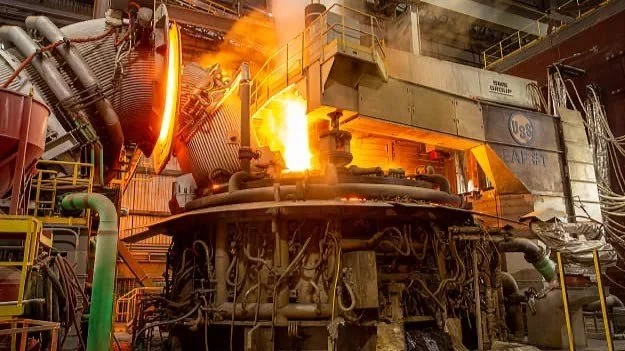Leadership Failure all the way to the Bank at U.S. Steel (013)
“I know the roof is leaking, and our plants were all built in the last century, but I think the smart move is to spend almost $1.2 billion buying our stock. We can always patch the roof later.”
US Steel blast furnace, US Steel
President Biden just killed the Nippon Steel purchase of US Steel. Part of the purchase proposal by Nippon included a commitment to invest a much-needed $1.4 billion into plant maintenance and improvements. I’m wondering what this movie might have looked like if the Board of US Steel and CEO David B. Burritt were a little more focused on the long-term health of US Steal.
A closer look at the company’s financial decisions between 2021 and 2023 reveals a concerning disconnect between shareholder-focused financial maneuvers and the long-term needs of the business.
Over $1 Billion in Stock Buybacks
Between 2021 and 2023, U.S. Steel had significant stock buybacks. In 2021, the company repurchased approximately $150 million worth of its shares. In 2022, a whopping $849 million, and in 2023, $175 million more was repurchased.
Buybacks do serve as a tool to return capital to shareholders; they also boost stock prices (fewer shares over the same cash flow) and can signal confidence in the company’s future. My partner Rita McGrath has pointed out the hazards of stock buybacks and the frequent strategic disconnects and occasional disasters involved.
What is bizarre from an outsider’s perspective is for U.S. Steel to prioritize such a significant allocation of capital toward buybacks when its aging property, plant, and equipment (PP&E) were in dire need of modernization and improvement.
The Need for External Investment
If it looks bizarre from the outside, just imagine how bizarre the pitch to the board must have been from Burritt. It might have gone something like this: “I know the roof is leaking, and our plants were all built in the last century, but I think the smart move is to spend almost $1.2 billion buying our stock. We can always patch the roof later.”
And the Board said, “Sure, sounds good to us.”
This reached a new level of bizarre-dumb (sorry, I couldn’t help it) when Nippon Steel’s proposal included a commitment to invest at least $1.4 billion in maintaining and upgrading U.S. Steel’s facilities. This investment was seen as “essential to ensure the company’s competitiveness and sustainability” in a global market that demands efficiency, innovation, and environmental responsibility.
Show me the money or “Strategic Missteps”
Burritt’s “leadership” during this period raises many questions about strategic priorities and foresight. By directing nearly $1.2 billion toward stock buybacks between 2021 and 2023, U.S. Steel clearly diverted resources that should have been used to address the pressing need for capital improvements.
This is much easier to understand if you follow the money. Over these years, he collected roughly $31 million in stock-based compensation:
2021: Total compensation of $19 million, with $11 million in stock awards.
2022: Total compensation of $18.99 million, including $9.5 million in stock awards.
2023: Total compensation of $16.73 million, with $10.5 million in stock awards.
So, for the three years before the proposed and much-needed buy-out and investment, Burritt made $54.7 million – that’s what generational wealth looks like. In 2023, the average US Steel worker would have needed to work roughly 201 years to earn what Burritt made (Glass Door says the average US Steel Union worker makes $34 an hour, and the September 1, 2022 Agreement between US Steel and its unions illustrates $28.34 on page 84, so I went high at $40 an hour).
The Broader Lessons for Leaders
Strategic leadership requires balancing short-term financial gains with long-term sustainability. That clearly didn’t happen here, and now a critical national asset is decaying and potentially impacting all of us.
For U.S. Steel, the reliance on a proposed acquisition and the subsequent need for Nippon Steel’s investment underscores a leadership and governance failure to adequately plan for and address the company’s operational needs. Said differently, the CEO and the Board put their financial health ahead of the company they are guiding.
Be well,
Feel free to contact me at ron@valize.com, ron@uplandgroup.us or connect with me on LinkedInatlinkedin.com/in/ronboire/ or Twitter @ronboire
Ron is a globally experienced organizational transformation specialist, keynote speaker and leadership coach. His leadership has rapidly transformed underperforming businesses and operating groups as well as non-profits to create measurable results in extraordinarily short timeframes. He has held C-level roles as CEO of Barnes & Noble, Sears Canada, and Brookstone, as well as senior leadership positions at Sony, Toys R Us, Sears Holdings, and Best Buy.
(C) 2025 Ron Boire

